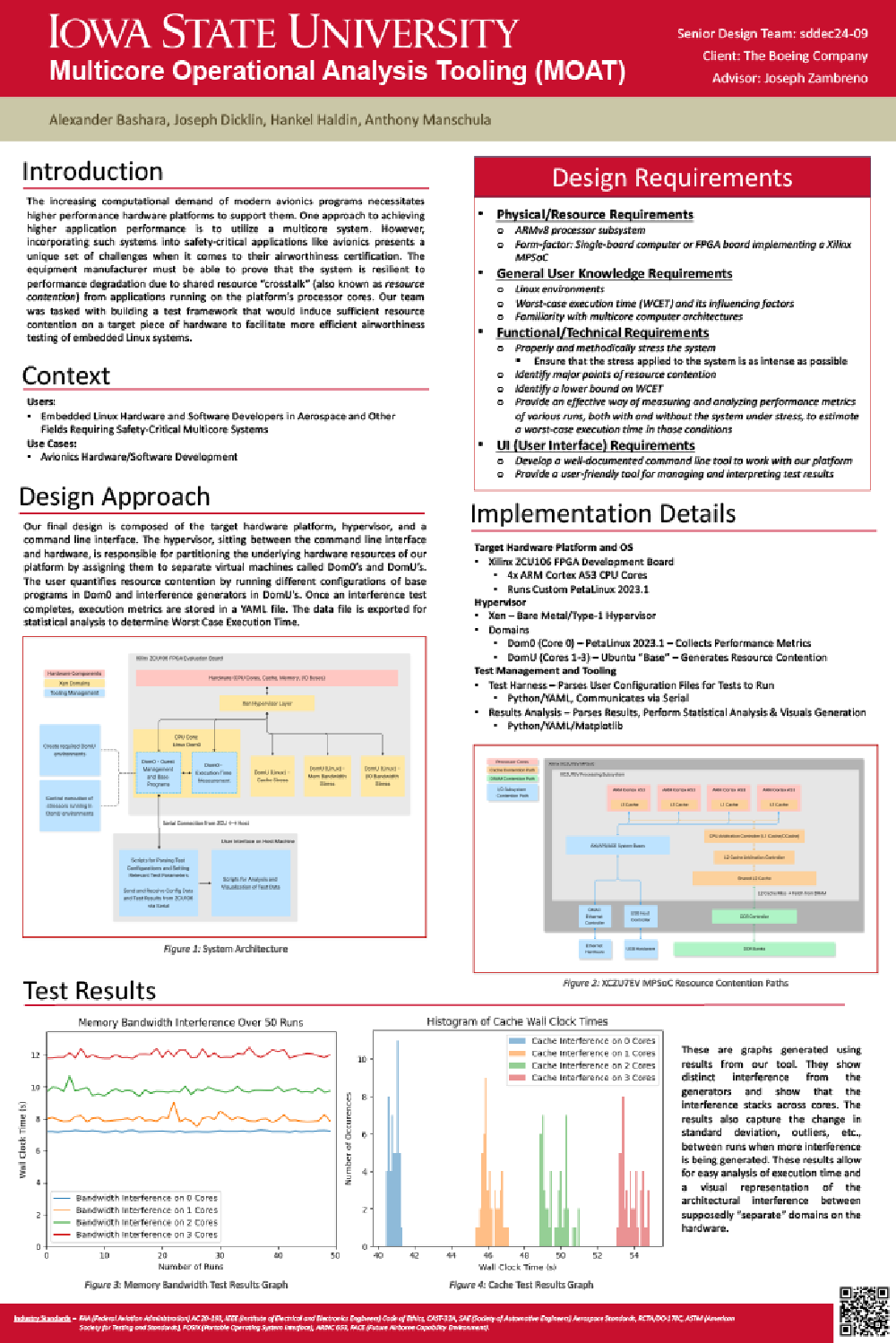Multicore Operational Analysis Tooling

Iowa State CPRE senior design project, with Boeing as the client.
The increasing computational demand of modern avionics programs necessitates higher performance hardware platforms to support them. Among the various avenues that exist, one approach to achieving higher application performance is to utilize a multicore system. However, incorporating such systems into safety-critical applications like avionics presents a unique set of challenges when it comes to their airworthiness certification. The equipment manufacturer must be able to prove that the system is resilient to performance degradation due to shared resource “crosstalk” (also known as resource contention) from applications running on the platform’s processor cores. Our team was tasked with building a test framework that would induce sufficient resource contention on a target piece of hardware in order to facilitate more efficient airworthiness testing of embedded Linux systems. Boeing presented our team with several requirements, including processor architecture, system form factor, system resource partitioning approach, and testing framework design. The final design utilizes a hardware platform incorporating the recommended ARMv8 processor architecture, and supports the Xilinx PetaLinux framework, allowing for streamlined system image revisions. The system image includes the Xen hypervisor, which enables the user to partition execution of different programs to distinct processor cores and quantify the effects of resource contention on worst-case program execution time. Our solution includes a front end that allows for efficient collection of execution time metrics across a variety of program types and resource contention methods. The current version of our system meets our clients’ needs by providing them with a flexible framework that quantifies the effects of system resource contention on program execution time. Given that our solution is open-source, future developers may wish to make improvements in several areas, including analysis of contention mitigation methods, inclusion of a graphical interface for testing, and refinements to the results analysis tools. Overall, our solution is an important step in the landscape of modern multicore systems analysis, and its open-source nature allows for its continued use and improvement.
A more in-depth project description, along with other detailed deliverables, can be found on our senior design website. Additionally, the code is being hosted open-source on GitHub.